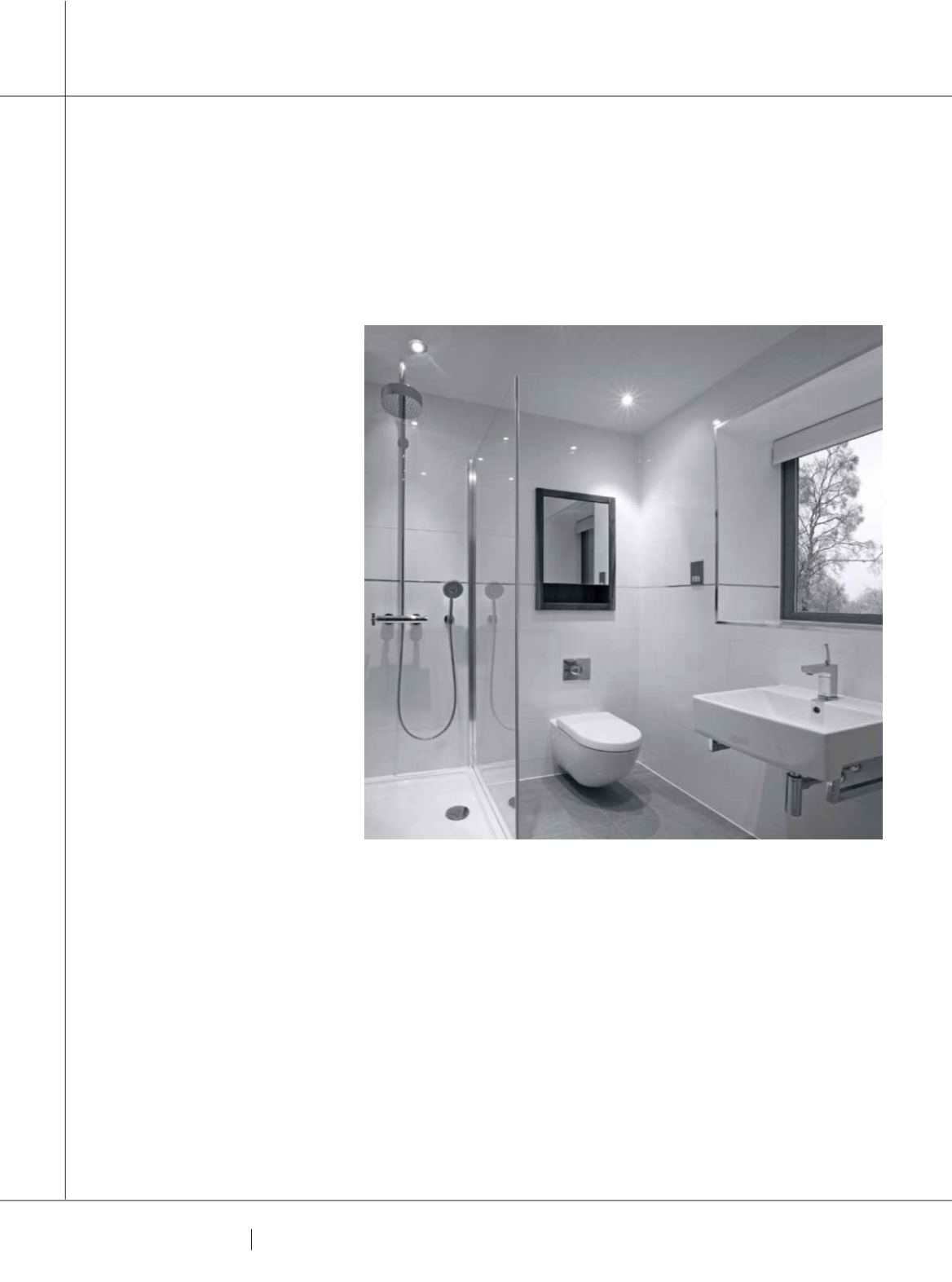

6 4
PLUMBING CONNECTION
WINTER 2016
THE PERFECT MATCH
U
ltra-modern toilet pans
are almost unrecognisable
from their predecessors in
all facets: looks, functionality and
performance. Toilet pans are now able
to perform an effective flush using
far less water thanks to the design
advancements in shape and size of the
flush bowl and the profile in which the
water flows through. The drawback
of these cleverly engineered flush
profiles is that they generally have a
higher susceptibility to compromised
performance when set up with
incorrectly matched flushing devices.
Four Star WELS rated toilet pans are
designed for low water consumption,
with only 4.5 litres of water coming
from a full flush. Because the volume
of water is quite small, the pan must
efficiently clear the contents of the
bowl quickly where there is a residual
amount of water following the waste to
carry it to the sewerage network. For
a toilet pan to operate at its maximum
efficiency it requires water to be
delivered to it at the rate and pressure
that it was initially designed and tested
for.
The flow rate and pressure changes
the way water is dispersed around the
rim to correctly cascade down into
the bowl in the right locations. If not
correct, the pan’s performance can
be severely affected. Insufficient flow
usually means that the front of the rim
is starved of water, and aggressive
flow often results in water splashing
onto the bathroom floor. New style
rimless toilet pans can be particularly
sensitive to incorrect flush conditions.
Flushing pressures and rates are
controlled by the cistern, (or electronic
valve) that the toilet pan has been
matched with. For close coupled
suites, the cistern is mounted on top of
the pan and would have been perfectly
matched by the manufacturer during
design. The matching task increases
in complexity for wall faced, or wall
mounted toilets which need to be
connected to a separate flushing
device, typically from a third party
manufacturer.
Historically a discharge flow rate
of 1.4 litres per second has been the
number that cistern manufacturers
have worked to. More often than not,
this flow rate is still adequate and
suitable for a lot of pans on the market.
In more recent times the evolution
of bathroom design with greater
emphasis on beauty and practicality
in high density urban developments
has seen a shift in toilet pan design.
Smaller bathrooms promote the
demand for smaller wall faced or wall
mounted pans using the space in the
wall to house the matched flushing
device.
Rimless toilets, new to our market,
have a narrower tolerance in flow
delivery requirements than a typical
boxed rim toilet pan. Such pans
have a lower margin for error and
BATHROOM PRODUCTS HAVE COME A LONG WAY OVER THE PAST NUMBER OF YEARS AND THE HUMBLE TOILET PAN
HAS SEEN SOME OF THE LARGEST DEVELOPMENTS OF ALL.
TERRY NGUYEN
EXPLAINS THAT WHEN IT COMES TO
TOILETS PANS AND FLUSHING SIZES, ONE SIZE DOES NOT FIT ALL AND FINDING THE PERFECT MATCH IS A MUST.
Toilet pans matched with an incorrec flushing device can cause many issues.
PROVE STANDARDS
















